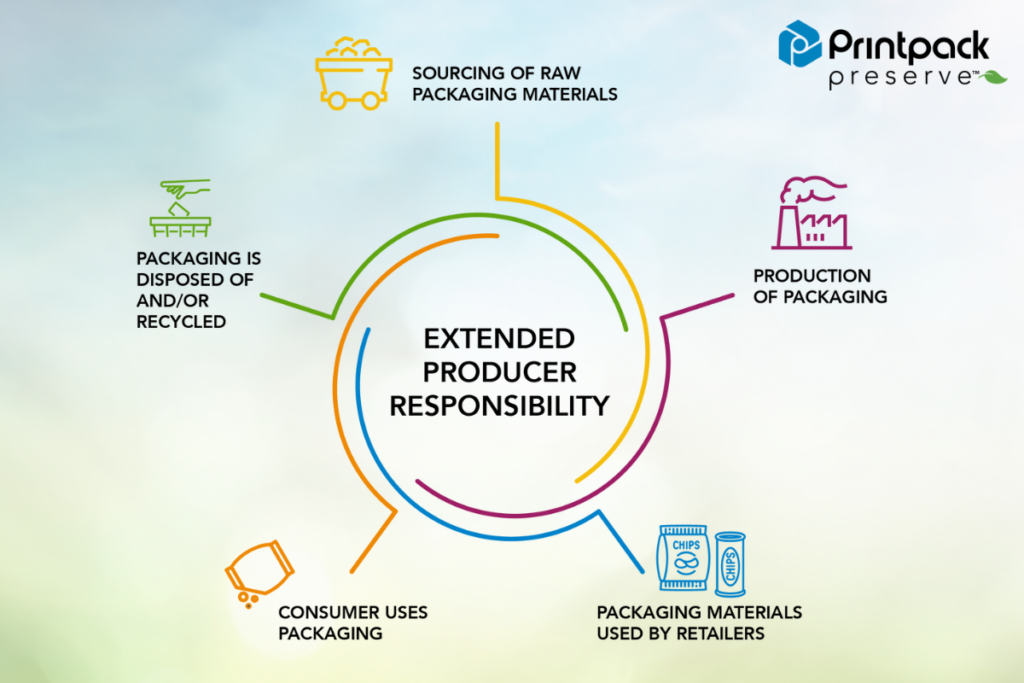Rethinking Sustainability Goals: Why Recycled Content

The Opportunity In the evolving market of sustainable packaging, companies are increasingly turning to recycled content as a strategy to […]
Learn More


Is Your Brand Ready for Upcoming Sustainability Laws?
A Need-To-Know Guide for Designing Packaging in the NEW EPR Regulatory Environment
When creating a packaging design strategy, it is not only important to meet today’s current market demands, but also to seamlessly incorporate North American legislation updates as they are enacted, particularly those related to Extended Producer Responsibility (EPR) laws. These regulations pertain specifically to sustainable claim labeling requirements and end-of-life plans for sustainable packaging. As the packaging industry takes bold strides towards sustainability, brands must align with the legislative mandates shaping the future of responsible business practices.
Current EPR, Labeling Laws and Bottle Bill regulatory legislation
Extended Producer Responsibility (EPR) laws are regulatory frameworks designed to shift the responsibility for end-of-life management of a product from consumers and local governments to the producers or manufacturers. The typical stated goal is to encourage producers to consider the entire life cycle of their products, including disposal and recycling, and to take responsibility for the environmental impact of those products.
Federal FTC Green Guides are aimed at ensuring the accuracy of environmental claims and helping marketers avoid deceptive environmental assertions. To address evolving market and industry dynamics, revisions encompassing a diverse range of perspectives from consumers and industry stakeholders will be made in 2024. (The FTC has typically updated the Green Guides about once every 10 years.)
Bottle Bills or Container Deposit laws add a small deposit on top of the price of a beverage that is repaid to the consumer when the empty container is returned to the retailer for recycling.
Preparing for EPR and sustainable claim labeling requirements.
When looking at the varied regulatory environment across the country, consider how your brand can be intentional with design and maintain impactful, cost-effective packaging while meeting the necessary sustainability requirements. Companies may want to proactively assess and validate data systems now to be well-prepared for the implementation of EPR reporting requirements in the states where they market covered packaging materials. It is also advisable to have your company’s legal counsel provide guidance and take part in decision making around on-pack claims. As per current EPR regulations, producers in Colorado and Oregon are mandated to commence reporting in 2025, those in Maine in 2026, and those in California in 2027.
Reporting requirements will include:
Considering that EPR fees are likely to be determined based on material and weight, accurate reporting will be crucial to minimize errors and save significant costs. Even a minor mistake, such as misclassifying corrugated as paperboard or inaccurately referencing the weight per material instead of the entire package, could have a substantial impact on the fees incurred. Preparing in advance is a cost-effective measure to ensure accurate reporting and compliance with packaging regulations.
If not already doing so, brands should consider looking at source reduction strategies for packaging design. These include eliminating of unnecessary packaging materials, incorporating post-consumer recycled (PCR) content, and promoting reuse. Additionally, brands must stay informed about evolving EPR and EPA regulations. Regularly updating packaging design teams and legal teams on regulatory laws and compliance requirements will ensure that they are well-versed in the latest standards.
Printpack has a team of engineers dedicated to sustainable packaging innovation who collaborate with our customers on sustainable packaging.
Sources:
California Labelling Law: https://calrecycle.ca.gov/wcs/recyclinglabels/
Oregon Labelling Law: https://www.oregon.gov/deq/recycling/pages/tiltaskforce.aspx
SPC EPR Database: https://epr.sustainablepackaging.org/
Bottle Bill Info: https://www.bottlebill.org/index.php/about-bottle-bills/benefits-of-bottle-bills
Stay
Connected
Join our subscription list and you will be the first to hear about sustainable product options, packaging trends, and other
Printpack news.

Lets Talk
Packaging
We pride ourselves on designing the right package for your brand’s needs. Collaborate with us. Take your brand to the next level and win at the shelf.
Contact Us